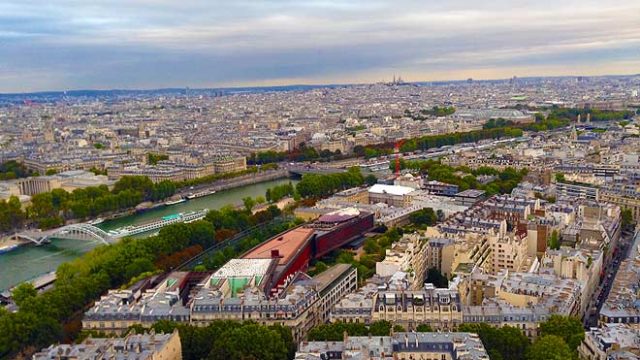In 1892, the French Republic announced a grand World Fair, and invited countries from around the world to attend with exhibitions. The aim was to increase cultural tolerance and form the basis for an understanding that all of mankind, despite their unique differences, were essentially similar. The call was met with overwhelming response from the world over, with countries hastening to prepare their exhibits.
Over 500 acres of land in the heart of Paris was made available for the Exposition and between the months of April and November in 1900, Paris played host to a giant party. There were many firsts, like mass public exposure to absolutely alien concepts like films with sound or escalators. Campbell’s Soup won a gold medal, and Rudolph Diesel exhibited his diesel engine (it ran on peanut oil). Panoramic paintings were the rage at the Exposition, along with Russian matryoshka dolls. Art Nouveau entered the public consciousness for the first time. The British Royal Pavilion was a mock-Elizabethan mansion designed by Sir Edwin Lutyens, while the German Pavilion publicised passenger liners and other modes of modern, comfortable living inside a large tower that looked like a beer hall. The first Olympic Games in Athens in 1896 had been a major success, so the Exposition decided to host the second Olympics, though as a sideshow, with winners recieving tie-pins, pencils and 100 francs so they could buy their medals.
The colonial dominance of the major European powers found its place at the Exposition in the form of African ‘Human Zoos’ from French colonies in Africa while the Netherlands erected a Dutch East Indies (Indonesia) pavilion, which included a reconstruction of the 8th century Sari temple. Sweden and Finland, drew attention with their colourful and minimalist pavilion designs, which were a great hit.
Despite the popularity of the Exposition (over 43 million people attended), it ran into monumental debts. The exhibition lost about 82,000 francs on the fair and it so crippled the economy, that such gigantic international fairs soon became a fad of the past. This painting by the French artist Lucien Baylac, famous for his bicycle posters, gives a sense of the extravagance of The Exposition Universalle.




